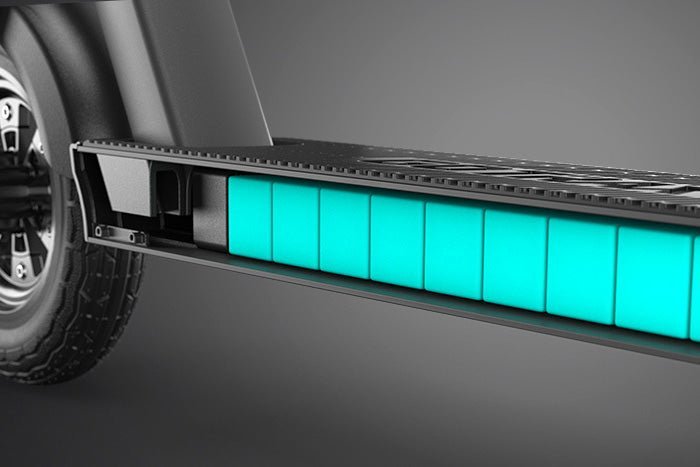When buying a new electric scooter, riders typically have one key question: how long will the battery last? The battery impacts both the range and the lifespan of your scooter, so it's important to find a scooter that will take you the distance you need for many rides to come. Today, we'll be breaking down the factors that impact your battery's range and total lifespan while offering tips to get the most out of your ride.
How Far Can I Go?

The range of your ride will vary from scooter to scooter depending on the specs of its battery. Batteries are measured in voltage and amps. The voltage is the amount of electrical potential within the battery. A higher voltage on a battery will typically mean an increase in acceleration, since a larger battery is capable of storing more energy than a smaller one. Amps, or amp hours, measure the amount of electrical charge that can be supplied within an hour.
In order to get an accurate readout on your scooter's range, you need to calculate your scooter's watt hours. You get this number by multiplying the battery's voltage by its amp hours. The higher the watt hours, the longer the range.
Most scooters have an estimated maximum range based on their watt hours, but there are a number of factors that can impact this range. Maximum estimated ranges typically assume that you're riding on smooth ground, that you're riding using lower speed settings, and that there are no external factors that are causing greater resistance than expected. To maximize your range when riding, try to avoid rougher roads or heavy wind resistance, stick to lower speed settings where you can, and minimize the amount of extra cargo you're bringing with you.
How Long Will My Battery Last?

The lifespan of your battery is heavily impacted by how well you take care of your battery. Maintaining your battery diligently will help you avoid unnecessary damage and preserve its performance for as long as possible. The most important thing is to avoid extreme temperatures and moisture, which can damage your battery. This is especially key during winter, where the colder, icier environment makes scooter care extra important. Next, you want to store it properly when you aren't using it to avoid environmental wear and tear. Finally, keep the battery charged between 25-85%. This helps avoid overcharging your battery or fully discharging it, both of which can decrease the lifespan of your battery. While some decline in your battery's performance is inevitable no matter what, through regular use and safe storage, you can get a lot out of your battery before it needs to be replaced.
We hope these tips and tricks help you get the most out of your electric ride. No matter where or what you ride, just remember to stay safe, follow the rules of the road, and always wear a helmet!






